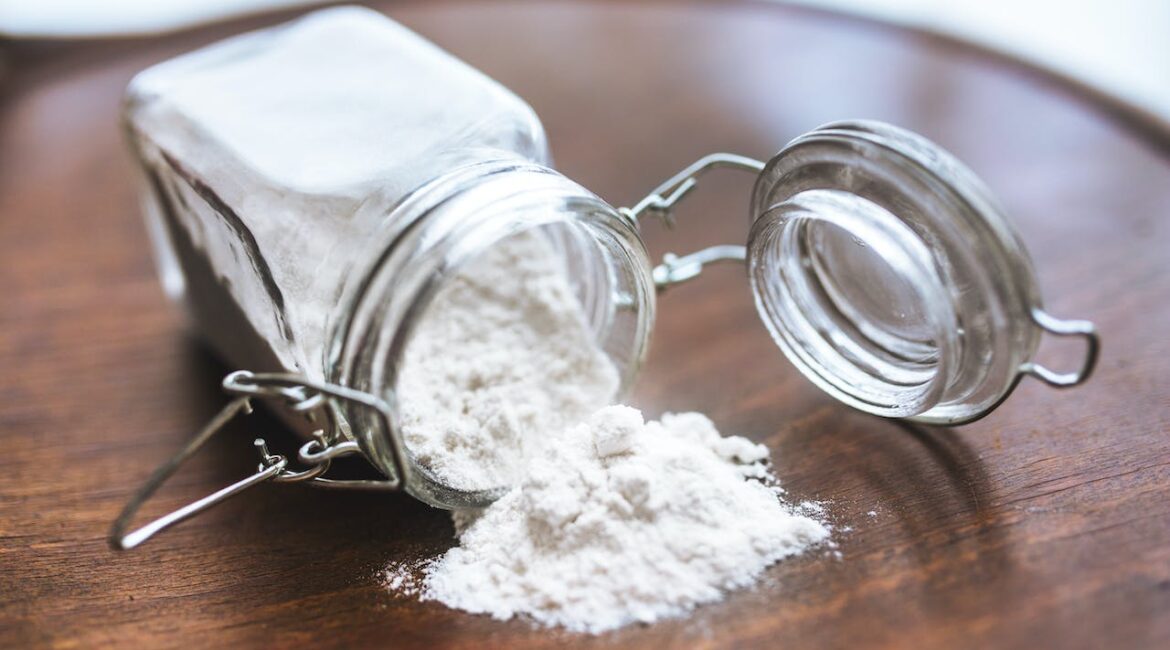Baking soda, known scientifically as sodium bicarbonate, is more than just a kitchen staple. It’s widely recognized for its cleaning abilities, including its use as a teeth whitener. Its effectiveness lies in its mild abrasive properties and chemical reaction when mixed with water. Upon dissolving, baking soda releases free radicals that interact with the molecules causing stains on the enamel, like those from coffee, wine, or tobacco, effectively breaking down the discoloration.
Unlike several commercial teeth whitening products that rely on bleaching agents, baking soda whitens teeth by addressing the actual stains. This process can be particularly appealing for those looking for a natural and cost-effective solution.
A Quick Guide to Using Baking Soda for Whitening Your Teeth
- Start by mixing a small amount of baking soda with water to form a thick paste.
- Apply the paste to your teeth using your toothbrush.
- Allow the paste to sit on your teeth for about four to five minutes. This duration is crucial for the baking soda to work on the stains.
- After the waiting period, brush your teeth thoroughly with the baking soda paste, then rinse your mouth with water to remove all residue.
Important Considerations and Safety
- Baking soda is effective for removing surface stains, but it won’t change the natural color of your teeth or lighten a stain that goes deeper than a tooth’s surface.
- Use the paste sparingly. Excessive use can erode the enamel over time due to its abrasive nature.
- Always consult with your dentist before adding new products to your dental care regimen, especially if you have sensitive teeth or gums.
Maximizing the Benefits of Baking Soda Whitening
Ensure you’re using pure baking soda for your teeth whitening regimen. Check that the product is food-grade and does not contain additives that could harm your enamel or gums. For optimal results, incorporate baking soda into your oral care routine two to three times a week. Consistency is key, but it’s also crucial not to overdo it to avoid enamel damage. You can enhance the whitening power of baking soda by occasionally using a solution of hydrogen peroxide. A teaspoon of hydrogen peroxide mixed with two teaspoons of baking soda can make an effective whitening paste. However, limit this practice to once a week to protect your oral health.
Before committing to a baking soda regimen, test for sensitivity. Apply a small amount of your baking soda paste to a section of your gums. If you notice irritation, discontinue use and consult with your dentist. After using baking soda, follow up with a fluoride toothpaste. This helps to remineralize your teeth and protect against cavities, ensuring that you maintain overall dental health while whitening.
Pay attention to how your teeth respond to baking soda whitening. If you notice increased sensitivity or changes in enamel texture, it’s important to stop using baking soda and seek advice from your dental professional. Remember that baking soda is not a standalone dental care solution. It should complement regular brushing with fluoride toothpaste, flossing, and professional dental cleanings.
After using baking soda, rinse your mouth with water to balance the pH level. Staying hydrated will also help to wash away food particles and bacteria, contributing to overall oral cleanliness. If your teeth have deep, stubborn stains, over-the-counter solutions may not be effective. In such cases, consult with your dentist for professional whitening treatments that are safe and tailored to your dental needs.
History of Using Baking Soda on Teeth
The use of baking soda, or sodium bicarbonate, for dental hygiene dates back well over a century. Its history as a teeth cleaner can be traced to the early 19th century and possibly even earlier. Baking soda began to gain popularity as a tooth-cleaning agent in the 1800s. Before the advent of modern toothpaste, people used various substances to clean their teeth, such as salt, chalk, and charcoal. Baking soda emerged as a preferred alternative because it was less abrasive than other substances and had a natural whitening effect on teeth.
By the late 19th century, baking soda was being commercially marketed for dental use. The first toothpaste containing baking soda was developed in 1873 by Colgate and was sold in a jar. The introduction of baking soda into toothpaste formulas provided a gentle abrasive that helped remove surface stains from the teeth and neutralize the acids produced by plaque bacteria.
Dentists started to recognize the benefits of baking soda for oral health, and it became an endorsed substance for teeth cleaning. It was appreciated for its ability to clean teeth effectively without being too harsh on enamel and for its alkaline properties, which help maintain a balanced pH level in the mouth, inhibiting the growth of acid-producing bacteria that can cause tooth decay. Today, many toothpaste brands include baking soda as a key ingredient, and it’s often recommended by dental professionals for patients who need a gentle but effective abrasive to help with stain removal. Additionally, baking soda’s natural deodorizing properties help to freshen breath, making it a multipurpose substance in oral care.
Ready to brighten your smile with the simplicity and power of baking soda?
There’s a whole world of affordable, safe, and effective teeth whitening that awaits you. If you’re curious about integrating baking soda into your oral care routine or have concerns about stains and dental health, we’re here to help illuminate the path to a dazzling smile.
FAQ’s on Baking Soda and Teeth Whitening
Is baking soda safe for daily use on teeth?
While baking soda is a safe alternative to commercial whitening products, it should not be used daily for teeth whitening due to its abrasive nature. Limit its use to 2-3 times per week to prevent enamel wear.
- Can baking soda damage my gums?
Baking soda is generally safe for your gums if used correctly. However, if you have sensitive gums or any gum disease, it’s best to consult with your dentist before using baking soda. - How long does it take to see results from baking soda whitening?
Results can vary based on the degree of staining and the natural color of your teeth. Some may notice a difference after a few uses, while others may need a few weeks to see noticeable results. - Will baking soda whiten fillings, veneers, or crowns?
No, baking soda cannot whiten dental restorations such as fillings, veneers, or crowns. It only removes surface stains from natural teeth. - Is there anyone who should not use baking soda for teeth whitening?
People with braces, permanent retainers, or those who have had recent dental surgery should avoid using baking soda. Additionally, if you have sensitive teeth, it’s best to seek advice from a dentist before using. - Does baking soda help with bad breath?
Yes, baking soda can help neutralize odors, making it an effective remedy for freshening breath. - How should I use baking soda to whiten my teeth?
Create a paste by mixing baking soda with a little water. Apply the paste to your toothbrush and brush gently. Let it sit for a minute or two, then rinse thoroughly. - Can I mix baking soda with my regular toothpaste?
Yes, you can add a small amount of baking soda to your regular toothpaste to enhance its whitening power. - How do I avoid damaging my enamel when using baking soda?
Use a soft-bristled toothbrush and avoid brushing too hard. Limit the use of baking soda to a few times a week and always follow up with fluoride toothpaste. - What should I do if my teeth become sensitive after using baking soda?
If you experience sensitivity, discontinue use and consult with your dentist. They can provide advice on how to whiten your teeth without causing sensitivity.
Visit our contact page now and let’s start a conversation about your journey to a brighter, healthier smile with the natural whitening power of baking soda. Our team is eager to address your questions and guide you through safe, effective methods that cater to your unique dental needs.
- Transform Your Health with Medford Medical Weight Loss Program - June 9, 2025
- A Chat with Nate and Mika, Christian Wedding Photographers - July 18, 2024
- Ultimate Guide To Playing Online Casinos - May 27, 2024







